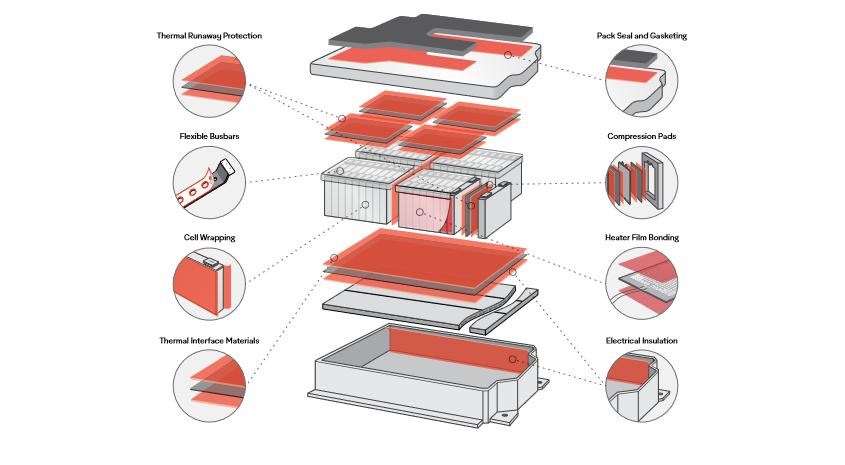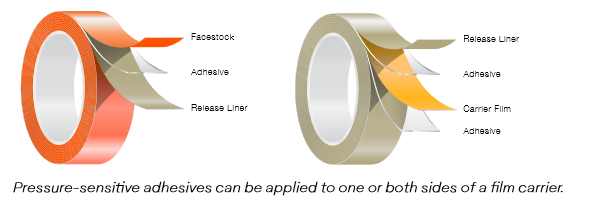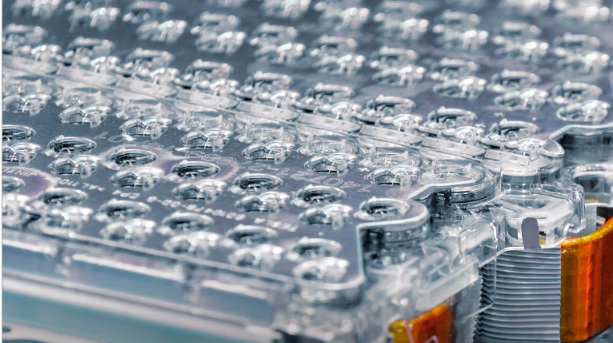Battery pack designs frequently use mechanical fasteners or fluid- or paste-applied adhesives to bond materials. These bonding methods offer both advantages and drawbacks.
Mechanical fasteners
Mechanical fastening methods are commonly used in EV battery packs to ensure the structural integrity and safety of the pack. These methods include the use of bolts, screws and other fasteners to securely attach the battery cells to the pack housing or frame.
Advantages
Mechanical fasteners have good high-temperature performance and enable relatively easy maintenance or replacement of individual cells within the pack. Fastening techniques are widely known to automotive engineers, who often employ a combination of joining methods throughout a pack’s assembly.
Drawbacks
The assembler must apply proper torque and tension — any overloading or underloading of fasteners can lead to safety hazards and decreased performance. Fasteners tend to take up more volume, contribute more mass and create stress concentrations. They often may not be an optimal solution for joining dissimilar materials. Fasteners also require extra tooling and design considerations.
Fluid- or paste-applied adhesives
Fluid- or paste-applied adhesives often play a crucial role in EV battery pack assembly. They can bond various components, including the cells, cooling system and housing.
Advantages
These adhesives provide a strong, durable bond and are excellent for filling and sealing joints. They typically add less mass and volume than mechanical fasteners and are an effective solution for joining dissimilar materials.
Drawbacks
Fluid- and paste-applied adhesives require curing time to reach their fixture strength and full strength — this is critical to ensure the safety and reliability of the pack. Curing time can vary depending on the type of adhesive used and the environmental conditions, and that time must be accounted for in the assembly workflow. Components are often completely bonded when curing is complete, so disassembly or repair requires force or special tools. These materials also require stringent safety and material handling, along with intensive quality control processes.
A third bonding method for EV battery packs is the use of PSA tapes. These tapes offer many of the advantages of both mechanical fasteners and fluid- and paste-applied adhesives while overcoming many of those methods’ disadvantages. 
Introduction to PSA tapes
Upon contact with a substrate, a PSA (pressure-sensitive adhesive) forms a bond with only light pressure applied. The pressure causes adhesive flow over the substrate and activates interlocking, chemical or Van der Waals intermolecular forces. The adhesive’s viscosity also allows elongation, which absorbs energy to help hold the tape in place. PSAs are available in multiple formats, including label constructions and tapes.
When presented as part of a tape, the adhesive is often laminated to a carrier made of film, foam or other material. An adhesive can be laminated to only one side of the carrier (single coated) or to both sides (double coated), depending on the application’s needs. These adhesives can be made with specific properties, such as flame retardance or ease of removal, and can be formulated to meet requirements such as FMVSS 302 or UL 94 VTM-0. The carrier itself may provide functionality such as dimensional stability, dielectric strength and/or gap filling. A final layer, the release liner, protects the adhesive from contamination. The release liner may also protect delicate carrier materials while the tape is stored or transported to its assembly point.
Due to their performance and versatility, PSA tapes are now used across various industries. These include automotive, aerospace, building and construction, electronics, general industrial, and print and packaging.
PSA tapes offer a wide range of features and benefits for automotive battery pack construction. They are suitable for robotic application; can include easy-release liners for protection of delicate materials; provide an instant bond with no cure time needed; and are repositionable, eliminating waste and rework. The also provide a uniform adhesive coverage, allow removability for battery pack repair scenarios and are made of non-hazardous material, which simplifies storage solutions.
PSA tapes also help solve several challenges related to EV battery optimization assembly.
Challenge #1 — Bonding dissimilar materials
Modern EV battery packs often use multiple types of materials to address competing engineering issues. Properly joining these dissimilar materials is crucial for the pack’s long-term durability and performance.
Solution
PSA tapes are compatible with many substrates, including challenging materials with low surface energy. Tapes are also highly effective at distributing the stresses that often occur when joining dissimilar materials. This versatility enables engineers to use mixed functional materials in the pack.
Challenge #2 — Increasing pack energy density
Mechanical fasteners may take up significant space in the battery pack, especially if they’re not entirely flush with the surface they’re bonding. This can limit EV battery pack design and lower a pack’s energy density.
Solution
With their thin profiles, PSA tapes take up minimal space in a battery pack. This enables more battery pack space to be dedicated to functional materials such as cells, cooling systems, flame barriers, electronics, etc., thus helping to increase the pack’s energy density.
Challenge #3 — Increasing assembly throughput
Incorrectly applied manual fasteners or fluid- or paste-applied adhesives often require significant rework to correct. This can slow assembly and decrease overall throughput.
Solution
PSA tapes can be formulated for easy removability, allowing repositioning during assembly and waste reduction. Tapes affix instantly, eliminating the need to account for cure times associated with fluid- and paste-applied adhesives.
Challenge #4 — Enabling battery pack second-life
Second life for EV battery packs — including repair servicing and recycling/safe disposal — is becoming increasingly important as the size and age of the EV fleet grow. Taking apart components is very challenging when batteries contain structural adhesives or certain mechanical fasteners.
Solution
PSA tapes can often be more easily disassembled than fluid- or paste-applied adhesives or some fastening methods.
PSA tape application examples for EV battery pack assembly:
• Electrical insulation – Single-sided tapes that incorporate dielectric facestocks can be used to insulate conductive components such as module side plates and cooling plates.
• Thermal barrier bonding and encapsulation – Tapes can bond thermal barriers between cells or to other parts of the pack. Single-sided tapes can also be used to encapsulate thermal barriers, providing dimensional stability and sealing up dusty, fibrous materials like ceramic papers and aerogel composites.
• Cell-to-cell bonding – Tapes can bond pouch and/or prismatic cells in EV battery pack assemblies.
• Integration with seals and gaskets – Tapes that are integrated with seals and gaskets can be used to prevent water intrusion and unwanted noise, vibration and harshness, and to protect pack enclosures from contact with the chassis.
• Integration with compression pads – Tapes can be integrated with compression pad foams used for cell protection.


